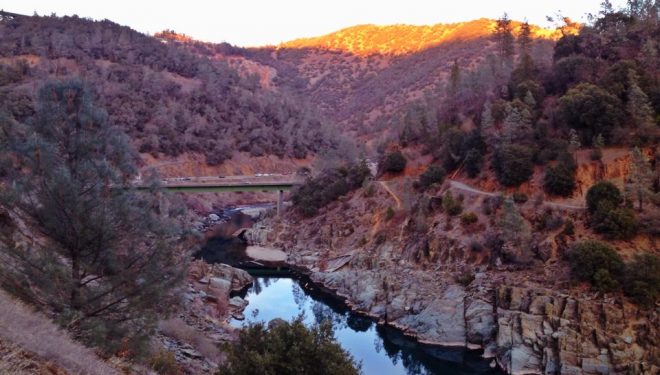
By Miles Krieger
On October 8th, 2023, Governor Newsom signed Senate Bill 389 (Bill) into law. The Bill, which amends Water Code section 1051, enables the State Water Resources Control Board (State Water Board) to investigate and ascertain the validity of pre-1914 appropriative and riparian rights. [S.B. 389, 2023-24 Leg., Reg. Sess. (Cal. 2023).]
Background
The Water Commission Act of 1913 created a permitting and licensing scheme for surface water rights established after the effective date of the Act—1914. The State Water Resources Control Board (State Water Board) has permitting and licensing jurisdiction over post-1914 surface water appropriations, in addition to its jurisdiction over the reasonable use of water to prevent waste. The State Water Board has reasonable use jurisdiction over pre-1914 appropriative rights to surface water, but does not have permitting and licensing jurisdiction over such rights because those rights pre-date the Water Commission Act. Accordingly, surface water rights in California are divided into two categories: (1) pre-1914 appropriative rights and (2) post-1914 appropriative rights. The board also exercises reasonable use jurisdiction over riparian rights, which are rights to use the natural flow of water from a lake, river, stream, or creek.
Appropriative rights allow rights holders to divert surplus surface water in excess of the needs of riparian rights holders, including for use on non-riparian land. After 1914, people or entities seeking to appropriate water were required to apply to the State Water Board for a water right permit that included the place of use for diverted water, the purpose of use, the method of diversion, and amount of water to be diverted. Accordingly, a water right holder must apply to the board to change any of those features of the water right. On the other hand, pre-1914 rights holders established their rights by providing notice of their diversions and actually diverting water; pre-1914 rights holders thus do not have permits. Importantly, pre-1914 water rights holders may freely change the purpose or place of use of water under their rights to the extent the changes do not injure other water rights holders or initiate a new water right (e.g., by increasing the amount of water appropriated under the right). Historically, pre-1914 rights have enjoyed greater flexibility in their exercise compared to post-1914 rights, making them valuable rights limited primarily by reasonable use.
Senate Bill 389
The Bill highlighted tensions in the regulated community. As initially introduced, the Bill would have granted authority to the State Water Board to “determine” the validity of riparian and pre-1914 water rights, thus potentially extending substantial regulatory authority over the exercise of such rights. Substantial opposition to the Bill prompted several significant changes.
In particular, the Legislature replaced “determine” with “investigate and ascertain,” which recognizes State Water Board investigatory authority but stops short of granting authority to determine the validity of the right, thus aligning the Bill’s language with the board’s existing authority granted under Water Code section 1051. In particular, the Bill authorizes the State Water Board to:
. . .[i]nvestigate and ascertain whether or not water heretofore filed upon or any claimed riparian or appropriative right is valid under the laws of this state. Wat. Code, § 1051(a)(3), as amended by S.B. 389.
Investigatory powers include:
. . .issuing information orders to holders, claimants, and users. Under the orders, the holder or claimant must provide the State Water Board with information on the basis for the water right, including the patent date for the place of use, the notice date of the appropriation, and when the water was actually delivered. Orders issued to holders, claimants, and users may require information on prior diversions and use, including direct diversions and diversions to storage . . . . § 1051(b)(2)(E), (b)(3)(A), as amended by S.B. 389.
By authorizing the State Water Board to collect diversion and usage information, the board will be able to more closely scrutinize water usage under its reasonable use jurisdiction for pre-1914 and riparian rights holders.
Constraints
Despite granting investigatory powers to the State Water Board, the Bill imposes certain constraints on their exercise. For instance, the board must show that the benefit in issuing an information order must “bear a reasonable relationship” to the burden on the person under investigation. § 1051(c), as amended by S.B. 389. Additionally, the State Water Board must provide a written explanation of why the investigation is needed, along with supporting evidence. These procedural safeguards are important pre-requisites to the board exercising its investigatory powers and provide water rights holders an initial foundation from which to understand why the board is considering an investigation.
No Expansion of Circumstances Resulting in Forfeiture
Importantly, the Legislature also eliminated a provision that would have expanded circumstances resulting in the forfeiture of pre- and post-1914 water rights (riparian rights are not subject to forfeiture, although they may lose their historical priority in certain circumstances). As currently provided by statute, a water right may be forfeited after five consecutive years of non-use. However, under the common law, a right subject to forfeiture may be revived if water use is restarted and there was no conflicting claim asserted to the unused water. As originally proposed, the Bill would have allowed the State Water Board to determine a forfeiture occurred absent a conflicting claim. Such a change would have constituted a statutory override of the common law rule that “a forfeiture cannot occur in the absence of a ‘clash of rights’. . . .” Millview Cnty. Water Dist. v. State Water Res. Control Bd., 177 Cal.Rptr.3d 735, 752 (2014).
Although the Bill’s elimination of the conflicting-claim requirement was itself dropped, the board’s authority to order disclosure of diversion and usage information may result in more frequent findings of non-use against which a conflicting claim may be asserted, thus increasing forfeiture litigation and findings in the future.
Conclusion and Implications
How the State Water Resources Control Board will implement its new authority is unclear. Investigations that reveal inflated claims or abandoned rights may ultimately result in the diversions being deemed a trespass, subjecting the rights holder or user to a court order injunction. At a minimum, pre-1914 and riparian holders, claimants, and users should maintain detailed records of their diversion moving forward.




